 W
WAdoxomyia subulata is a species of soldier fly in the family Stratiomyidae.
 W
WAenictus ceylonicus is a species of reddish brown army ant found in Southern India, Sri Lanka, Southeast Asia and Australia. They are completely blind and around 3 mm in length. These ants are seen foraging underneath leaf litter in forests and well-vegetated areas, travelling in a trail of in three or more columns alongside each other, in parts of India. Their antennae, as in most species of Aenictus, have ten segments. The scape is long and extends above the head. The head is smooth and shiny. The mesosoma and the head region are dark brown, while the gaster is oval and lighter in colour, nearly translucent. The mesosoma is broad anteriorly and strongly compressed posteriorly. The petiole and the post petiole are large, conical and shining. They occur in rainforests and moist deciduous forests building temporary nests on the ground and in rotting logs.
 W
WThe American emerald is a species of dragonfly found in North America. Is coloured mostly black with a yellow ring between segments 2 and 3.
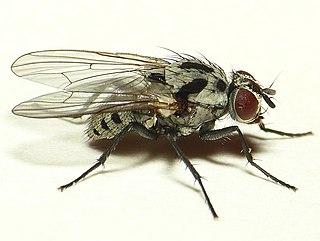 W
WAnthomyia procellaris is a species of fly in the family Anthomyiidae.
 W
WBrachydiplax duivenbodei is a species of dragonfly in the family Libellulidae. It is known by the common name darkmouth. It is native to Indonesia, the Solomon Islands, and Queensland in Australia.
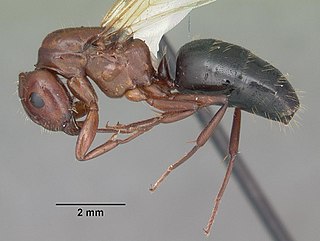 W
WCamponotus discolor is a species of ant in the family Formicidae.
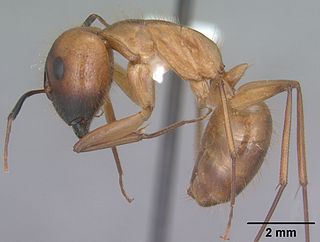 W
WCamponotus festinatus is a species of carpenter ant that is typically found in the Southwestern United States and northern reaches of Mexico. It is most commonly found around Tucson, Arizona. It lives in the semi-dead branches of palo verde trees found in the area. Camponotus festinatus is an exclusively liquid feeder. These ants can only feed on sap from trees or the juices of a deceased animal. Like most ants, their diet is primarily sugar with some protein. Camponotus festinatus ants are not known to be aggressive except towards other ants. Soldiers will prefer to run from humans rather than be aggressive. In principle, these ants can bite with their mandibles. However, as carpenter ants like these are formicines, they have no functional sting. Instead of stinging, they can use an acidopore to spray formic acid.
 W
WCamponotus floridanus, or Florida carpenter ant, is a species of ant in the genus Camponotus. First described as Formica floridana by Buckley in 1866, the species was moved to Camponotus by Mayr in 1886. The ant is widespread in Florida and occurs as far north as North Carolina and as far west as Mississippi.
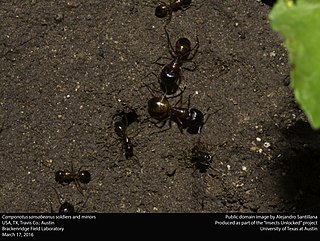 W
WCamponotus sansabeanus is a species of ant in the family Formicidae.
 W
WCardiocondyla nuda is a species of ant in the subfamily Myrmicinae. It is a widespread ant species, and not invasive in nature.
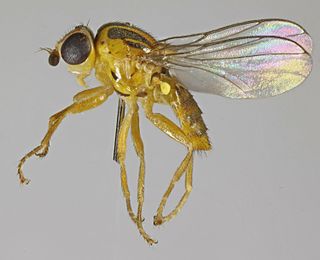 W
WChlorops planifrons is a species of fly in the family Chloropidae. It is found in the Palearctic.
 W
WCicada barbara is a species of cicada belonging to the family Cicadidae, subfamily Cicadinae and the genus Cicada.
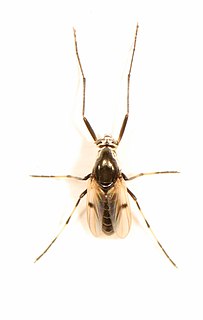 W
WCoelotanypus scapularis is a species of cheeto in the family Chironomidae.
 W
WCrocydopora is a monotypic snout moth genus described by Edward Meyrick in 1882. Its single species, Crocydopora cinigerella, described by Francis Walker in 1866 is known from Australia and New Zealand.
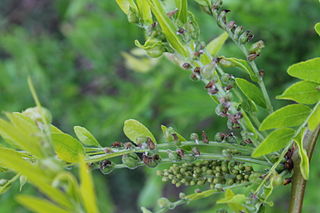 W
WDasineura gleditchiae, the honeylocust podgall midge, is a species of gall midges, insects in the family Cecidomyiidae. Native to North America it is an invasive species in parts of Europe. Honeylocust podgall midge is a pest of honey locust, forming galls on the foliage.
 W
WDasineura salicifoliae is a species of gall midges, insects in the family Cecidomyiidae.
 W
WDiogmites angustipennis, the prairie robber fly, is a species of robber flies in the family Asilidae.
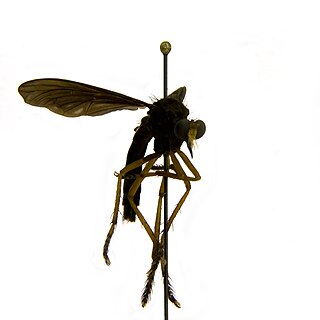 W
WDiogmites platypterus is a species of robber flies in the family Asilidae.
 W
WDolichoderus taschenbergi is a species of ant in the genus Dolichoderus. Described by Mayr in 1866, the species is endemic to Canada and the United States.
 W
WDorymyrmex insanus is a species of pyramid ant, one of several species known as crazy ants, for their "frenetic" movement and swarming behavior. It is found in hot, dry habitats in the southern parts of the United States, much of Central America, and tropical South America. Dorymyrmex insanus is listed as Vulnerable by the International Union for Conservation of Nature (IUCN).
 W
WEristalis obscura is a species of syrphid fly in the family Syrphidae. It is found in Europe.
 W
WFormica gnava is a species of ant in the family Formicidae.
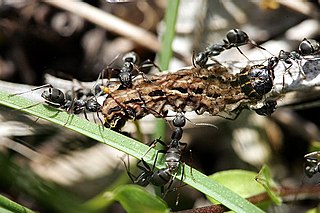 W
WFormica japonica is a species of ant in the genus Formica. It is found in Russian, Mongolia, China, Korea, Japan, and Taiwan. It is one of the most common ants in Japan.
 W
WGrallipeza nebulosa is a species of stilt-legged flies in the family Micropezidae.
 W
WGraptopsaltria nigrofuscata, the large brown cicada, is a species of cicada in the genus Graptopsaltria of the family Cicadidae found across East Asia, including Japan, the Korean Peninsula, and China. They are called aburazemi (アブラゼミ) in Japanese. The males make a loud chirping that ends with a click caused by a flick of the wings.
 W
WHedriodiscus binotatus is a species of soldier fly in the family Stratiomyidae.
 W
WHyalessa maculaticollis, known as 'min-min cicada' in Japan because of its sound, is a species of cicada.
 W
WIdiataphe cubensis, the metallic pennant, is a species of skimmer in the dragonfly family Libellulidae. It is found in the Caribbean Sea, Central America, North America, and South America.
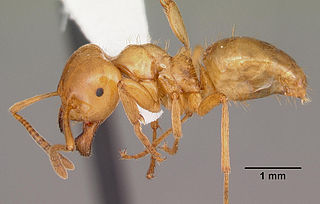 W
WLasius interjectus, or larger yellow ant, is a species of ant belonging to the genus Lasius, and was formerly a part of the genus Acanthomyops. Described in 1866 by Mayr, the species is native to the United States.
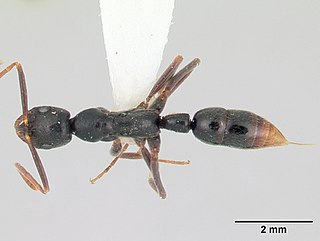 W
WLeptogenys elongata is a species of ant in the family Formicidae.
 W
WLinepithema fuscum is a species of ant in the genus Linepithema. Described by Mayr in 1866, the species is endemic to South America.
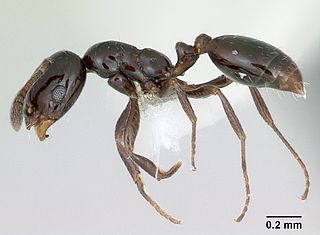 W
WThe little black ant is a species of ant native to North America. It is a shiny black color, the workers about 1 to 2 mm long and the queens 4 to 5 mm long. It is a monomorphic species, with only one caste of worker, and polygyne, meaning a nest may have more than one queen. A colony is usually moderately sized with only a few thousand workers.
 W
WThe fly Megaselia scalaris is a member of the order Diptera and the family Phoridae, and it is widely distributed in warm regions of the world. The family members are commonly known as the "humpbacked fly", the "coffin fly", and the "scuttle fly". The name "scuttle fly" derives from the jerky, short bursts of running, characteristic to the adult fly. The name "coffin fly" is due to their being found in coffins, digging six feet deep in order to reach buried corpses. It is one of the more common species found within the family Phoridae; more than 370 species have been identified within North America.
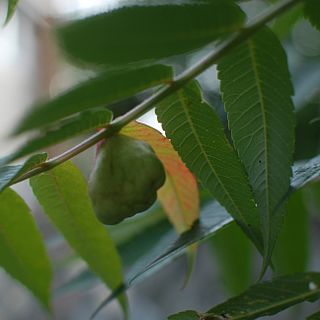 W
WMelaphis rhois is an aphid species first identified by Asa Fitch in 1866. Known as the staghorn sumac aphid, it is the only species in the genus Melaphis. It is a type of woolly aphid and one of the few aphids that induce the formation of galls.
 W
WMetadelphax propinqua is a species of delphacid planthoppers in the family Delphacidae. It is found in Africa, Australia, the Caribbean, Europe & Northern Asia, Central America, North America, Oceania, South America, and Southern Asia.
 W
WNeoclanis is a genus of moths in the family Sphingidae, containing one species, Neoclanis basalis, which is known from dry bush and woodland from Zimbabwe and Angola to Zambia, Tanzania and eastern Kenya.
 W
WNeurothemis decora is a species of dragonfly in the family Libellulidae.
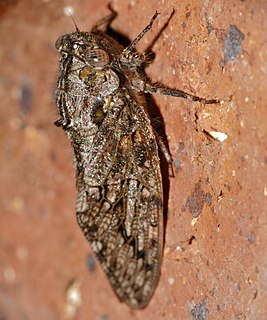 W
WPlatypleura haglundi is a medium-sized African cicada species, that occurs from northern South Africa to Zimbabwe, where it is found in diverse habitats. In South Africa it has been recorded in North West, the northern Free State, Northern Province, Gauteng, Mpumalanga and Kwazulu-Natal. The type was collected in Weenen Game Reserve, KwaZulu-Natal.
 W
WPlatypleura mijburghi is a medium-sized cicada species, that is native to South Africa. It has been recorded in Gauteng, Mpumalanga and the Northern Province. The adults are active from October to January.
 W
WProcladius bellus is a species of midge in the family Chironomidae.
 W
WThe Rocky Mountain locust is an extinct species of grasshopper that ranged through the western half of the United States and some western portions of Canada with large numbers seen until the end of the 19th century. Sightings often placed their swarms in numbers far larger than any other locust species, with one famous sighting in 1875 estimated at 198,000 square miles (510,000 km2) in size, weighing 27.5 million tons and consisting of some 12.5 trillion insects, the greatest concentration of animals ever speculatively guessed, according to Guinness World Records.
 W
WSehirus luctuosus, the Forget-me-not Bug, is a burrowing shieldbug belonging to the family Cydnidae. It is found from Europe to Central Asia.In Central Europe it is widespread and not uncommon. They are found in the Alps on sunny slopes up to almost 2000 meters above sea level.
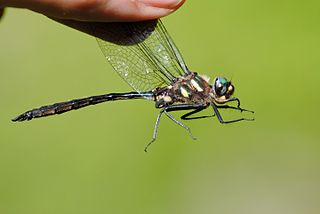 W
WSomatochlora elongata, known generally as the "ski-tipped emerald" or "ski-tailed emerald", is a species of emeralds in the family Corduliidae. It is found in North America.
 W
WSomatochlora forcipata, the forcipate emerald, is a species of emerald dragonfly in the family Corduliidae. It is found in North America.
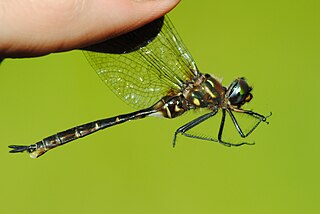 W
WSomatochlora walshii, the brush-tipped emerald, is a species of emerald dragonfly in the family Corduliidae. It is found in North America.
 W
WSphinctomyrmex stali is a Neotropical species of ants in the subfamily Dorylinae. Mayr described the genus Sphinctomyrmex with S. stali as its type species, based on a single dealate gyne. However, except for the holotype, there are no records of normal (alate) gynes for S. stali. All reproductive females collected after the original description are ergatoids.
 W
WStratiomys laticeps is a species of soldier fly in the family Stratiomyidae.
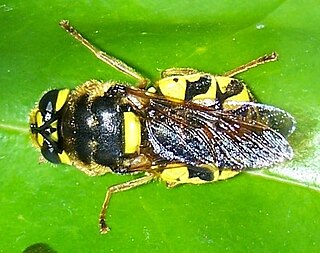 W
WStratiomys maculosa is a species of soldier fly in the family Stratiomyidae.
 W
WStratiomys normula is a species of soldier fly in the family Stratiomyidae.
 W
WStrumigenys godeffroyi is a species of ant. This is a very widespread species found in South East Asia as far east as southern India and Sri Lanka, and also Indonesia, the Philippines, Taiwan, New Guinea, northern Australia and much of Oceania.
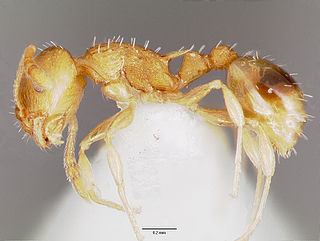 W
WTemnothorax curvispinosus is a species of ant in the genus Temnothorax. The species is common and widely distributed in eastern United States, where they inhabit forested areas. They build their nests in plant cavities, in the soil or under rocks.
 W
WTramea loewii, the common glider, is a species of dragonfly in the Libellulidae family. It is found in the Cocos Islands, Moluccas, Lesser Sunda Islands, New Guinea, New Caledonia, Australia and the western Pacific. Since 2005, Tramea loewii has also been recorded in New Zealand.
 W
WZabrachia tenella, the pine black, is a European species of soldier fly.